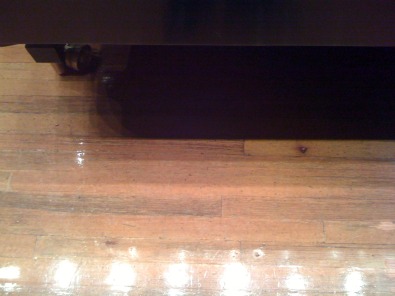There was a nail in the old Carnegie Hall stage floor that marked the precise spot where the leg of Vladimir Horowitz’s piano was to be positioned. Neurosis? Or careful attention to sonic detail?
I was not very satisfied with the way I was playing — near the end of a three-hour rehearsal at Wigmore Hall in London. My friend David Rick suggested that the piano be moved back, much closer to the rear wall of the Wigmore stage. The move was made and not only the sound but my physical ease of playing improved remarkably.
It might seem in large rooms or theaters that the exact positioning of the piano would not matter too much. Perhaps the overall acoustics of the space matter more? After audience members fill seats, the sound may clarify, or deaden.
In theaters with a proscenium, there’s often a practice of placing instruments upstage of the arc. Many pianists want to place the piano off center (left to right), so they — rather than the instrument — are more in the middle of the stage, and perhaps so more members of the audience can see the keyboard. In the playing of concertos, in order to make everything fit on stage, it may be necessary to move the piano so far forward (nearer the audience) that the best acoustical position is compromised.
In a concert hall, I sometimes spend half an hour playing a phrase or two, then moving the piano, then repeating the phrases, then repositioning. I’m sure particular repertoire influences my opinion of the sound. I’m trying to get to a spot where I can hear what I want to hear. In some halls, the best position for one piano, might be less good for another.
In the making of piano recordings, achieving a balance between all registers of the instrument can be challenging. Often, turning the piano helps. (Bass sounds will be less overwhelming if the strings are not aligned with the back wall.) In some rooms I have turned as much as 30 degrees off axis.
For recording, the piano and the mics must be positioned. After playing a phrase or two in a particular position, I go to the control room and hear a test recording. Positions are measured and marked so that they can be restored. In some situations even very small differences matter. Time may be very limited.
It seems unbelievable that in making my first recording for Arabesque the engineer and I worked more than three days positioning piano and mics!
In Jordan Hall in Boston and in many halls, I prefer the sound of the piano when the soundboard is approximately centered on the stage, left to right. Fewer people in the audience can see my hands, but the sound is better.
At a recent rehearsal in Jordan, lacking nail or hammer, I took this photo of the floor and the piano’s back edge. When I returned for the concert I compared the scuffs and marks visible on the floor to be sure that the crew had positioned the piano just as I had preferred it two days earlier.


In my experience with the stage at Jordan Hall, the decision as to where the instrument should be positioned has been often affected by the slight slant as the edge of the stage nears – less of an issue in chamber ensembles, usually, as the piano is not placed in the foreground; but certainly a problem in solo performances, with the piano set up closer to the audience. Physical comfort plays an fundamental role, and might compromise the desired sonic result.
It is typical of European theaters built in the 1700s or 1800s and conceived for both theater and opera productions to have a prominently slanted stage. In several occasions the front leg of the piano was raised with a small wooden block, and I was provided with a platform under the pedals to compensate the lack of leveling that would have incurred.
Bruce Brubaker comments:
Ah, raking. I do recall the first time I walked onto these slanted stages in Italy and the Netherlands. It makes clear that, at least in some reckonings, what matters in a performance is the experience of the audience!
Every live recording from Wigmore Hall that I’ve heard had excessive reverberation, and the piano tone was fuzzy. Yet WH is widely regarded as having fine acoustics. I wonder why…
For what it is worth, the most natural recordings of the piano that I ever heard are those made during Cleveland International Piano Competition. The venue is Bolton Theater (Cleveland Playhouse) – a small auditorium which looks like a movie theater. But I can’t imagine a more flattering way to present a Steinway Grand that what the sound engineers consistently achieve in that small auditorium.
I have a few of these Cleveland recordings on my blog at http://boomboomsky.blogspot.com,
and you can check them out yourself to see if my enthusiasm for their sound quality is reasonable.
Best,
Boom.